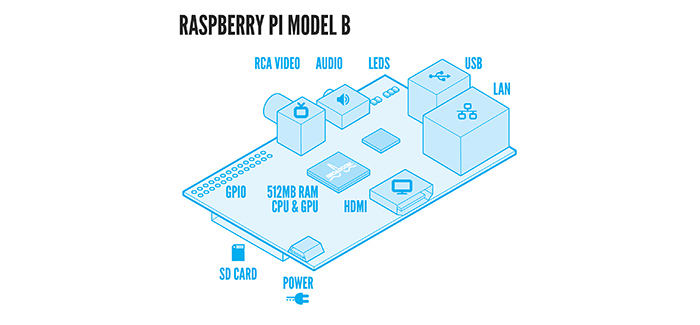Take a Look at the Raspberry Pi – Library Technology Buzz

Library Technology Buzz is an occasional blog post, written by the PLA Technology Committee, on hot topics in the library technology world. In this post, PLA Technology Committee member Amy Terlaga (Director of User Services, Bibliomation, Inc.) discusses the Raspberry Pi with Brian Auger (System Director, Somerset County Library System, N.J.)
AT: What’s a Raspberry Pi?
BA:The Raspberry Pi is a small computer — credit card sized — that was developed by the Raspberry Pi Foundation of the UK to help teach basic computer skills in schools. Think of it as the Tinker Toys of the 21st century. Because they are so powerful, flexible, and adaptable and because they cost only $35 their popularity has exploded worldwide. There is a huge user-base eager to share their projects. Visit http://en.wikipedia.org/wiki/Raspberry_pi or http://www.raspberrypi.org/ for more information.
AT: How are you using them at the Somerset County Library System?
BA: Our first project was to create digital signs using a Raspberry Pi, a WiFi dongle (so it can connect to the Internet) and specially-adapted Google Docs Presentations. Once set up, you have a digital sign whose text can be easily changed from anywhere on the Web. We use them to replace posters in house to advertise services and programs. Because the Raspberry Pi is so cheap, it is all done for essentially the cost of a flat screen monitor — we picked up 32” name brand monitors for $250. The Raspberry Pi fits on the back. You could also use them at a checkout or information desks with smaller, 19” monitors. It’s way easier than fussing with digital photo frames.
Our second project is to use a Raspberry Pi with touch screen monitors to create stack-end catalog-only devices.
And our third project — still in the works — is to create an inexpensive self-charge station using a Raspberry Pi, a touch screen and a barcode reader.
AT: Was it difficult to implement?
BA: The first project was a breeze — there is lots of user help out there for the devices. It would be even easier for anyone wishing to duplicate what we did — drop us a line and we’ll make the ISO file available to you. With a little tweaking on your end, you would have a working model in no time. As this article is being written we are starting our second and third projects and are not having any problems other than finding the time!
AT: How much does it cost?
BA: The Pi itself is quite cheap, around $35. A great way to begin would be to purchase a starter kit, which typically include everything you need to get going: a Pi, an SD card, power supply and a case.
AT: What are the staff resources it takes to support it?
BA: We have a very small staff doing this kind of thing: a Director of Virtual Services (Rich Loomis) and a part-time assistant. These projects are all their brainchildren. Going from working out a prototype to moving into “production,” it transitions easily into a great project for student volunteers who will do the actual assembly. We have all the pieces on order now for volunteers to assemble into the digital signs we will then roll out to the branches.
AT: What has been the patron reaction? Could you share any success stories?
BA: We don’t have any of the signboards out for the public just yet but have used them in a variety of venues, including a Chamber of Commerce Small Business Expo (slides are here: http://goo.gl/656WKf ) and staff development day. The constantly-changing sign board makes a great attention-grabber and conversation-starter. If you keep the box your 32” monitor came in, you can easily transport the whole lot offsite with little trouble.
AT: Whom could I contact at your library if I wanted the code for your sign project?
BA: Email Rich Loomis at rloomis@sclibnj.org.
Tags: Raspberry Pi







